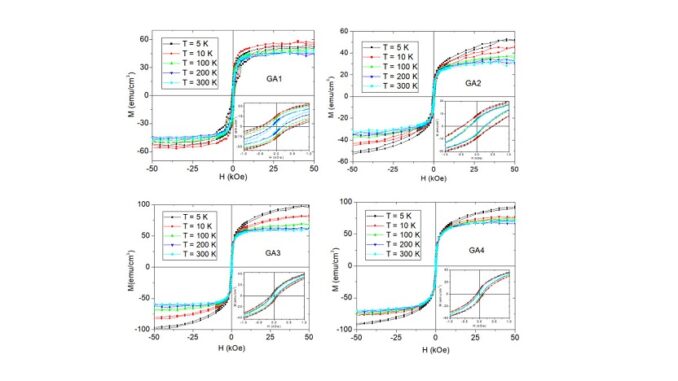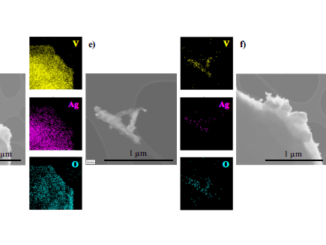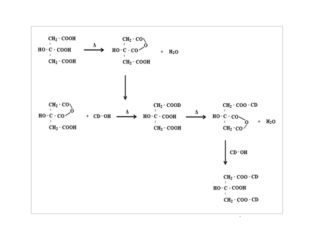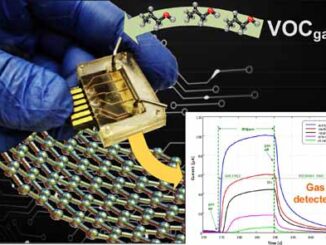
Room temperature ferromagnetism in oxygen-deficient gallium oxide films with cubic spinel structure
Abstract: Oxygen-defective gallium oxide (Ga2O3-x with 0.4 < x < 0.7) thin films with cubic spinel structure were deposited on c-cut epi-polished sapphire wafers using thermal evaporation technique by keeping specific values of oxygen partial pressure in the evaporation chamber. The preparation method and post-treatment conditions induced distinct oxygen stoichiometries in the films which exhibit a ferromagnetic-like behavior at room temperature. Despite the measured saturation magnetization values do not exhibit a straightforward correlation to the oxygen stoichiometry of the films, the presence of oxygen vacancies and defects is presumably the origin of the unconventional magnetic behavior. Strong magnetic irreversibility exhibit by the magnetization measurements performed using field-cooling and zero-field-cooling protocols indicate the presence of disordered magnetic moment distributions which are likely non-collinear. Theoretical and experimental results available in the literature corroborate with the assumptions that oxygen vacancies and defects appear as the main reason for room-temperature ferromagnetism. All films exhibit soft magnetic behavior at room temperature, exhibiting remanent magnetizations between 7% and 20% of the saturation magnetization which saturated magnetic moments is estimated as 0.43 and 1.24 Bohr magneton per oxygen vacancy. The present results extend the functionalities of this interesting material, which is already investigated for applications in several technological areas, for possible uses in the areas of spintronics and emerging areas of the optospintronics.
Author(s): Pichorim, A.; Neckel, I. T.; De Oliveira, A. J. A.; Varalda, J.; Mosca, D. H.
Materials Chemistry and Physics
Published: 1 August 2022, Volume 287, 126320
DOI: https://doi.org/10.1016/j.matchemphys.2022.126320
CDMF
The CDMF, hosted at the Federal University of São Carlos (UFSCar), is one of the Research, Innovation and Dissemination Centers (RIDC) supported by the São Paulo State Research Support Foundation (Fapesp), and also receives investment from the National Council Scientific and Technological Development (CNPq), from the National Institute of Science and Technology of Materials in Nanotechnology (INCTMN).




